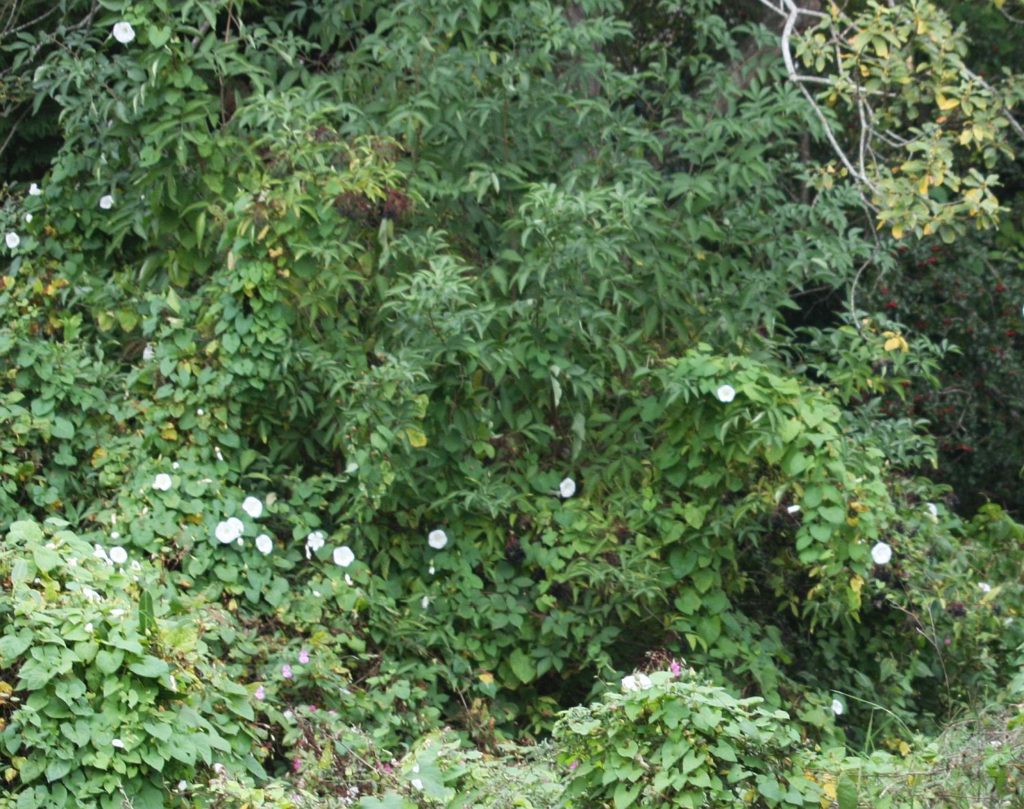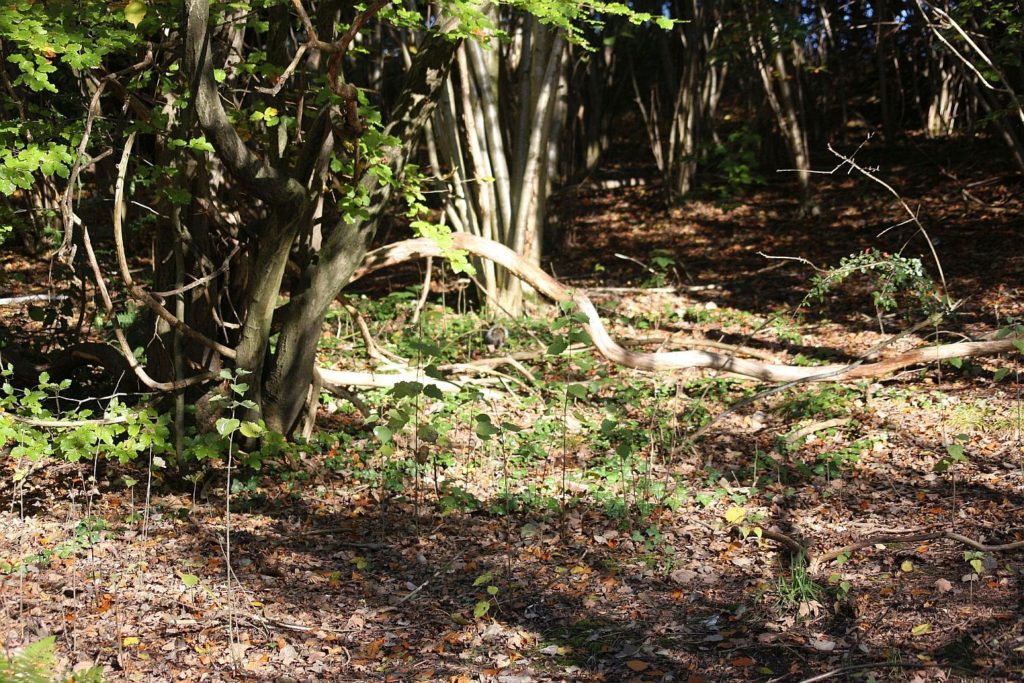
Beyond the brambles you can see shadowy spaces beneath the elder branches. They are the sides of a bank, four feet deep, that let you drop into a ditch. The undergrowth you can see in the foreground is wall to wall nettle. I was picking blackberries there last week – there were lots, in peak condition – when I slid down that bank, and only the elder roots stopped me hitting the ditch. If I had, I don’t know how I would have got out! I have lost confidence in the theories that grasping the nettle reduces the sting, also that it does anything at all to help arthritis. It doesn’t look as if I will be picking blackberries any time soon.
This is a great pity, as it is a wonderful year for berries of all sorts, hawthorn sparks among the foliage, rowans a wild flame, hips burning a deeper red each day. We have had plenty of rain since the middle of August, and the garden is thriving, with sedum and phlox, marigold and marshmallow still flowering. I have saved seeds of marigold, poppy and echinacea, and I’m waiting for the marshmallow ‘cheeses’ to ripen, so that I can sow them. The snapdragons are over, however, and I have planted out wallflowers and bulbs of wild daffodils under the willow at the front of the house, and mulched it with ‘lakeland gold’ a bracken based compost which will add structure and tone down the alkilinity of the soil a bit. It is coming up to the equinox, and people are beginning to post on social media about the skeins of geese coming in for the winter. The air is colder, and my focus is shifting from outside to in, planning next year’s sowings, the sewing and knitting for the longer evenings, and more importantly, the new writing.
Last week I wrote about my trip to Moniack Mhor, where I received a lot of help and encouragement with a book of essays I want to write about the poetics of human relationships with the landscapes and communities where we live. Think a synthesis of fifteen years of blogposts, but less rambling and reactive and repetitive, more structured and at a leisurely reading pace. It is harder than you might think to craft a language about this. I found a perfect quote from Gary Snyder about knowing a place, googled it, and found it used as the cover photo of a survivalist group in midwest USA, complete with a man brandishing an AK rifle. I’d have liked to use ‘dwelling’ to describe the permanent, committed relationship you might have with a home place, as opposed to the temporary alignment you might have with a place you’re in for work, or a holiday, or this phase of your dream life, but Heidegger used it for some questionable attitudes to favoured species and people, and it sometimes gives rise to nativist thinking and ‘blood and soil’ politics which would be distracting. I’m using the phrase ‘grounded’ to describe this axis of the book.
But there’s also the ‘gleam of light’ axis – the phase of poetry which illuminates the tangles and tedium of the everyday, which celebrates, honours and inspires. It’s a more adventurous and experimental task, where we meet beings we never expected to meet, explore places and ideas we never wanted to go, and come back gifted, broken and remade. I believe that both these phases could combine and modify each other to make for ways of living with the world that are wiser, more creative and kinder. Or at least make for the kind of poetry you’d want to read!
But also there is new poetry. The essays will be called Unwilding, but there will be a collection inspired by the local earth-spirit, the duende of this place. Here is a bit from one of the new poems:
The garden speaks in sow thistle, mudstone
spider and slug. I say to it ‘apple trees’.
It says ‘elecampane’. It says roses here,
not there. Leaf cutter and chafer live there.
It gives me couch grass, bistort, ground ivy,
red clover, buttercup, magpie, fox. I live here
west of the sun, east of the moon. Orion
strides up the wrong face of the sky’s hill.
It will have the wild apple trees, the brambles and elder, and the voices of the burns – most local fairy creatures in Scotland live in water, not on the land, it would appear. It will probably have mines and metalworks, as I discover more about the past, monks and evangelical preachers, there’s a precedent for them, too. It will be called Wilding.
